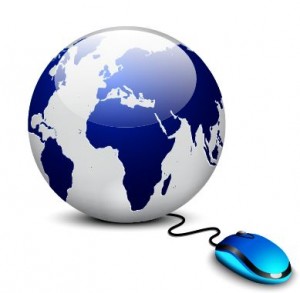Share This
Related Posts
Tags
25 Years of WWW
By Anca Gagiuc on Mar 15, 2014 in Technology
It sounds unbelievable, but it all started only 25 years ago this week. On a March day in 1989, Sir Tim Berners-L ee, a British computer scientist, established the first connection of his brainchild called the World Wide Web – a system for publishing information over the internet. It was an idea that would change the world and life as we know it.
ee, a British computer scientist, established the first connection of his brainchild called the World Wide Web – a system for publishing information over the internet. It was an idea that would change the world and life as we know it.
Berners-Lee worked at CERN – the European Organization for Nuclear Research near Geneva, Switzerland – and his intention was to help itinerant academics from all over the world run a complicated particle accelerator, the Large Hadron Collider. These scientists were eager to share information – data and test results – but had plenty of roadblocks. Berners-Lee’s proposal specified a set of technologies that would help overcome that; however, his initial proposal was not immediately accepted.
Perseverance is what made Tim successful: by October 1990 he had particularized three essential technologies that remain today the foundation of the Web, visible on any Web browser:
- HTML: HyperText Markup Language is the publishing format for the Web that includes the function of formatting documents and link to other documents and resources.
- URI: Uniform Resource Identifier is a sort of “address”, unique to each resource on the Web.
- HTTP: Hypertext Transfer Protocol allows for the retrieval of linked sources from across the Web.
By the end of 1990, the first Web page was served. By 1991, people outside of CERN were able to join the community. Perhaps the most important thing in the history of technology is set on April 1993 when CERN announced that the World Wide Web technology would be available for anyone to use, for free.
Today the World Wide Web is the most powerful communication medium we know. Whether we teach and learn, buy and sell, or share and collaborate, the Web has changed daily life. This became possible because Tim Berners-Lee and his team understood that in order for the Web to reach its maximum potential all technologies must become global standards, following the same implementation process around the world. Under this premise, in 1994, Tim founded the World Wide Consortium (W3C), a place for stakeholders to concord around guidelines and specifications tailored to ensure that the Web works for everyone and that its evolution is responsible.
A quarter of a decade later ..
Today, 87 percent of American adults are connected to the web. Every minute, hundreds of millions of messages are sent between billions of connected people, 20 million photos are shared, and at least $15 million are exchanged in goods and services, according to the World Wide Web Foundation.
What made this product amazingly successful from the very beginning is the so-called network neutrality, and Berners-Lee warns people that a battle around this neutrality could cause irremediable damage to the future of the web. The neutrality concept is a simple one: the web material we access on our laptops and smartphones, regardless if from Google or a nondescript blog, should flow freely, no matter its origin and creator. No special treatments, no favors, no nepotism.
“The web should be a neutral medium. The openness of the web is really, really important,” Tim said. “It’s important for the open markets, for the economy and for democracy.”
In order to raise awareness over his greatest fear related to the Web – what could happen if telecommunication giants took control of the web – Tim plans to spend the next twelve months working closely with web protection consortiums. “It’s possible that people end up taking the web for granted and having it pulled out from underneath them,” he said.
As birthday wish, in order to help maintain net neutrality, the World Wide Web Consortium desires to help get online the billions of people who are not connected to the Web, due to limitations of technology, geography, and economics. The goal is to bring those people to the Web through mobile phones, as they are less expensive than traditional laptops and Internet connections.
Happy Birthday, World Wide Web!
